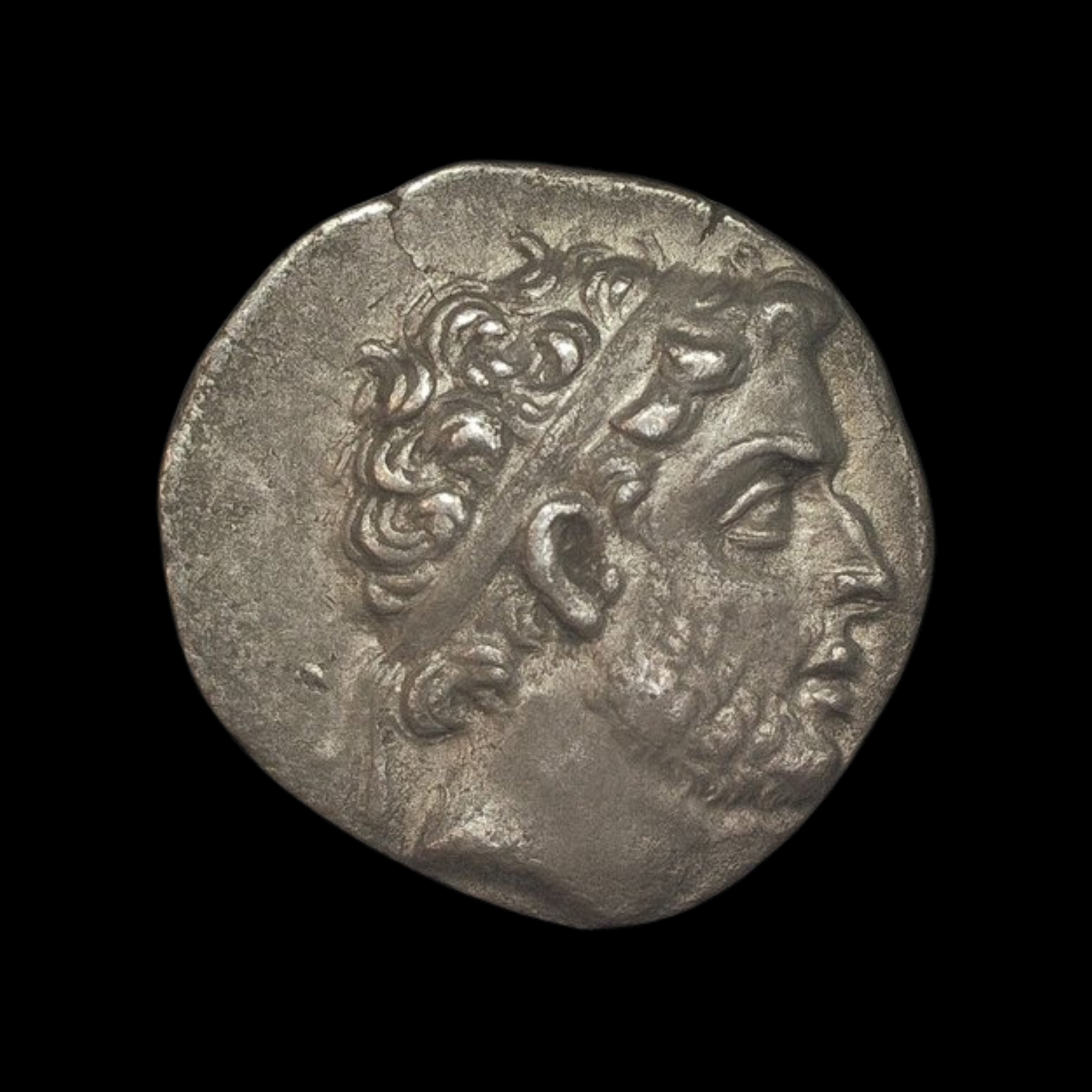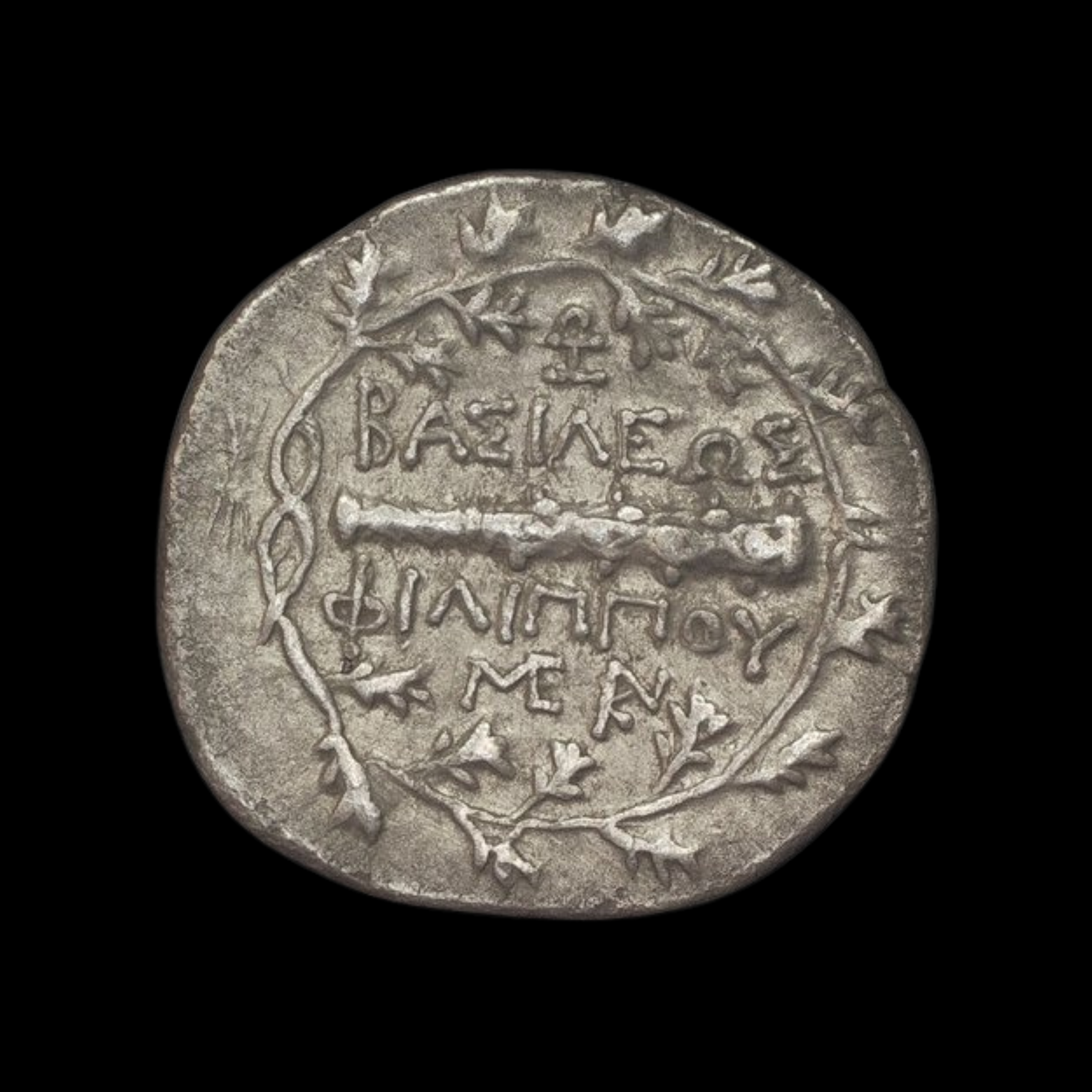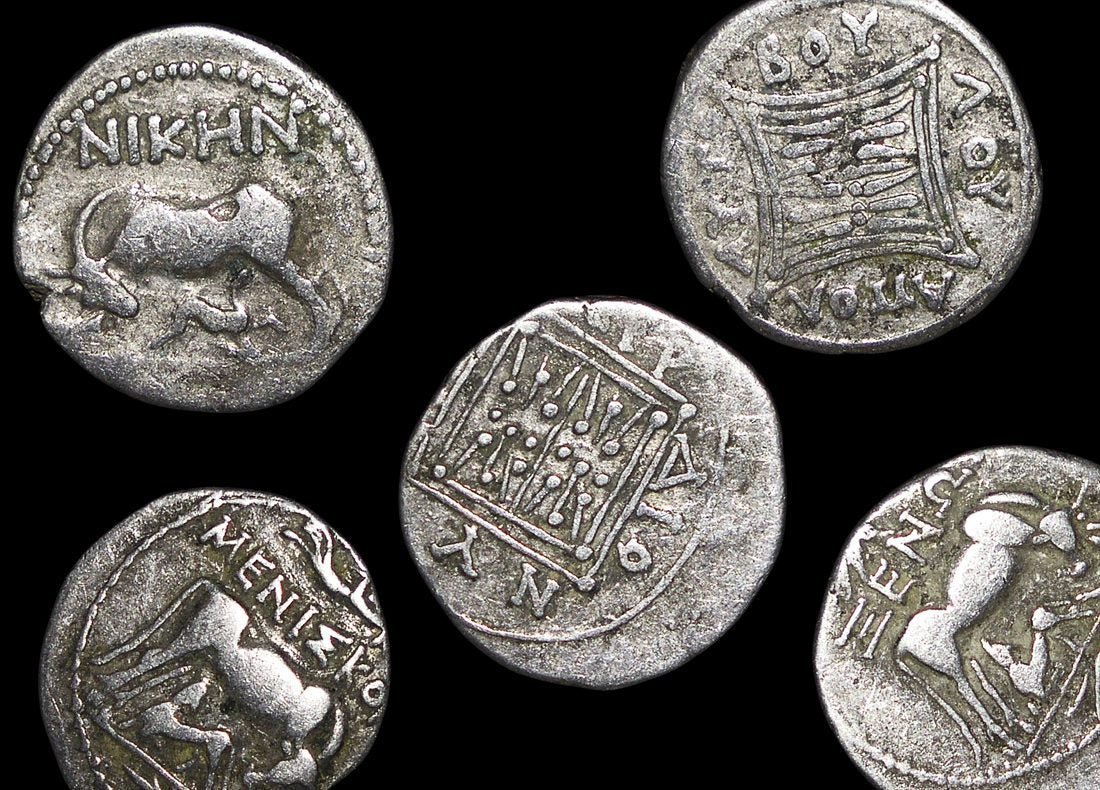 Image 1 of 2
Image 1 of 2

 Image 2 of 2
Image 2 of 2



Cow and Calf Silver Drachm from Ancient Illyria (2,200 years ago)
This silver coin was minted in the ancient Greek colony of Dyrrhachium in Illyria (modern-day Albania) between 229-100 BC. It represents an important trade currency that circulated widely throughout the Adriatic region during the Hellenistic period, when the city maintained significant commercial importance.
Coin Description:
Front side: A cow standing to the right nursing her calf; above them is an eagle with spread wings, and below in the lower section (exergue) is a running hound. The Greek inscription "EENQN" appears on this side.
Back side: A distinctive double stellate (star-like) pattern enclosed within linear borders. Greek letters "(AYP / 0IAO / AA/) MOY" are arranged around the design.
Technical Details:
Material: Silver
Denomination: Drachm (a standard Greek silver coin, roughly equivalent to a day's wage for skilled labor)
Weight: 3.20 grams
Catalog Reference: HGC-40, Maier 388
Period: 229-100 BC (Late Hellenistic period)
Historical Significance:
Dyrrhachium was a strategically located port city that served as a vital link between Greece and Rome, allowing this coinage to spread throughout ancient trading networks. The distinctive cow and calf imagery became a recognized and trusted design that merchants accepted across the Adriatic and Ionian regions (modern-day Albania, Greece, and Italy). These coins helped establish standardized currency values during a period of increasing Mediterranean trade and represent one of the most successful local Greek coinages that maintained its value even as Roman influence expanded throughout the region.
This silver coin was minted in the ancient Greek colony of Dyrrhachium in Illyria (modern-day Albania) between 229-100 BC. It represents an important trade currency that circulated widely throughout the Adriatic region during the Hellenistic period, when the city maintained significant commercial importance.
Coin Description:
Front side: A cow standing to the right nursing her calf; above them is an eagle with spread wings, and below in the lower section (exergue) is a running hound. The Greek inscription "EENQN" appears on this side.
Back side: A distinctive double stellate (star-like) pattern enclosed within linear borders. Greek letters "(AYP / 0IAO / AA/) MOY" are arranged around the design.
Technical Details:
Material: Silver
Denomination: Drachm (a standard Greek silver coin, roughly equivalent to a day's wage for skilled labor)
Weight: 3.20 grams
Catalog Reference: HGC-40, Maier 388
Period: 229-100 BC (Late Hellenistic period)
Historical Significance:
Dyrrhachium was a strategically located port city that served as a vital link between Greece and Rome, allowing this coinage to spread throughout ancient trading networks. The distinctive cow and calf imagery became a recognized and trusted design that merchants accepted across the Adriatic and Ionian regions (modern-day Albania, Greece, and Italy). These coins helped establish standardized currency values during a period of increasing Mediterranean trade and represent one of the most successful local Greek coinages that maintained its value even as Roman influence expanded throughout the region.
This silver coin was minted in the ancient Greek colony of Dyrrhachium in Illyria (modern-day Albania) between 229-100 BC. It represents an important trade currency that circulated widely throughout the Adriatic region during the Hellenistic period, when the city maintained significant commercial importance.
Coin Description:
Front side: A cow standing to the right nursing her calf; above them is an eagle with spread wings, and below in the lower section (exergue) is a running hound. The Greek inscription "EENQN" appears on this side.
Back side: A distinctive double stellate (star-like) pattern enclosed within linear borders. Greek letters "(AYP / 0IAO / AA/) MOY" are arranged around the design.
Technical Details:
Material: Silver
Denomination: Drachm (a standard Greek silver coin, roughly equivalent to a day's wage for skilled labor)
Weight: 3.20 grams
Catalog Reference: HGC-40, Maier 388
Period: 229-100 BC (Late Hellenistic period)
Historical Significance:
Dyrrhachium was a strategically located port city that served as a vital link between Greece and Rome, allowing this coinage to spread throughout ancient trading networks. The distinctive cow and calf imagery became a recognized and trusted design that merchants accepted across the Adriatic and Ionian regions (modern-day Albania, Greece, and Italy). These coins helped establish standardized currency values during a period of increasing Mediterranean trade and represent one of the most successful local Greek coinages that maintained its value even as Roman influence expanded throughout the region.
You Might Also Like










